#african saints
Text

Saint Maurice
Sandstone statue with pigment and gold
Cathedral of Saints Maurice and Catherine, Madgeburg, Germany
ca 1250 CE
#art#archaeology#sculpture#medievaltimes#medieval art#medieval europe#saint maurice#african culture#african history#roman empire#roman history#stone carving#stone sculpture#sandstone
133 notes
·
View notes
Text

MAAMUOR
www.beau-gar.tumblr.com
#mamuor majeng#ysl#saint laurent#anthony vaccarello#black man#black model#handsome#menswear#fashion#blackmalemodel#la sape#sapeurs#menswearfashion#african models#fashion model#male model#dandy#sprezzatura#mensfashion#model#black models#men's fashion#parisian style#mens style#gq style#style inspiration#fashion style#street style#style
45 notes
·
View notes
Text

Saint Elmo Brady (1884-1966)
Born in Louisville, Kentucky in 1884, Saint Elmo Brady became the first African American to earn a Ph.D. in the field of chemistry when he completed his graduate studies at the University of Illinois in 1916. The eldest child of Thomas and Celesta Brady, Saint Elmo had two younger sisters, Fedora and Buszeder. Brady studied chemistry at Fisk University in Nashville, Tennessee and earned his B.S. degree in 1908. After graduation he accepted a faculty position at Tuskegee Normal and Industrial Institute (now known as Tuskegee University) and was mentored by George Washington Carver and Booker T. Washington, President of Tuskegee. He began graduate studies in the Department of Chemistry at the University of Illinois in 1912, earning his M.S. degree in 1914 and completing his doctorate in 1916. As a graduate student at Illinois, Brady’s research focused on the characterization of organic acids. Brady eventually published three abstracts focused on his graduate work in Science, a prestigious peer-reviewed journal. After completing his doctorate, Brady returned to Tuskegee and continued teaching until 1920. He also served as chair and faculty of the Department of Chemistry at Howard University and Fisk University. Regarding his scholarly achievements, Brady continued collaborative work with the University of Illinois and established a faculty training program focusing on a technique known as infrared spectroscopy, which is used to identify various components in compounds. Moreover, he later published an article focused on the synthesis of a halogen compound with Dr. Samuel Massie, the first African American to join the faculty at the U.S. Naval Academy. Brady's work was important because there was significant interest in halogen compounds being used as insecticides at that time. Samuel Massie, who went on to work on the Manhattan Project in World War II, was one of several students that Brady mentored while teaching at Fisk University, thus encouraging African Americans to pursue careers in the chemical sciences. Although Brady officially retired from teaching in 1952, he took a position at Tougaloo College outside Jackson, Mississippi to help develop the chemistry department and recruit faculty. Brady married Myrtle Travers and they had two sons, Robert and St. Elmo Brady, Jr. who worked as a physician. St. Elmo Brady died on Christmas Day in 1966 Washington, D.C. He was 82
#saint elmo brady#african#afrakan#kemetic dreams#africans#afrakans#brown skin#brownskin#washington#chemistry#phd#fisk university#howard university
41 notes
·
View notes
Photo

Saint Benedict the Moor
1526-1589
Feast Day: April 4
Patronage: African missions, African Americans, black missions, black people, Palermo, Sicily
Saint Benedict the Moor, a Sicilian Franciscan friar and son of enslaved African slaves who converted to Catholicism, was freed at birth. He became a Franciscan because of his love for the poor. They appointed him as cook and eventually Master of Novices. Even though he was illiterate he had an intuitive understanding of theology, scripture, and spiritual counseling. He was called “the Holy Black" and is incorrupt to this day.
Prints, plaques & holy cards available for purchase here:{website}
92 notes
·
View notes
Text
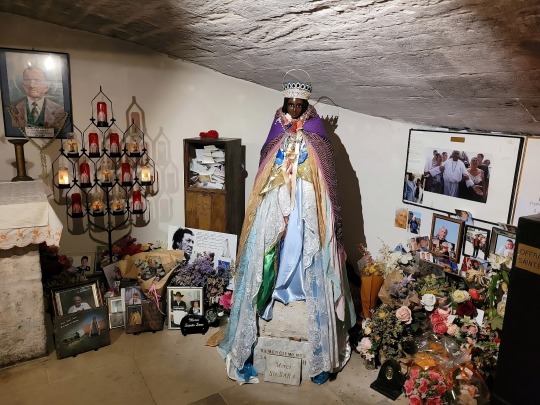

the shrine of saint sarah in the church of the saintes-maries-de-la-mer in in the camargue in france. the church itself was built in the 9th century and named for and dedicated to the three marys. a popular french legend goes that they and their maid, sarah, landed on a camargue coast.
saint sarah, or sarah-e-kali (sarah the black, “the black” is a title sometimes given to black/dark-skinned saints) in romani, is the patron saint of roma people in latin catholicism, though she isn't recognized by the catholic church. she is also revered as a protector for marginalized and poor people in general. her origins are thought to lie in a syncretization of the hindu goddess kali, the story of sarah along with the three marys, and the tradition of black madonnas. (christian roma have historically venerated other black madonnas as well.) the church is her major shrine - she's venerated here annually on the 24th of may by roma pilgrims.
#france#romani#interior#worship#christian#my posts#brahmic (hindu buddhist etc) deities are syncretized into a bunch of very specific forms depending on where you look#and one can have a bunch of different forms that are ultimately the same being/idea#it fits perfectly into the concept of saints if you think about it#not that people think saints are gods but the like. manifestations thing#i think there's some syncretic christianity/west african religions/hindu traditions in places 18th/19th century enslaved indians#were shipped to (mostly in central/south america which has a big history of syncretic christianity in general)
11 notes
·
View notes
Text
🫶🏾🌹🖤🖤


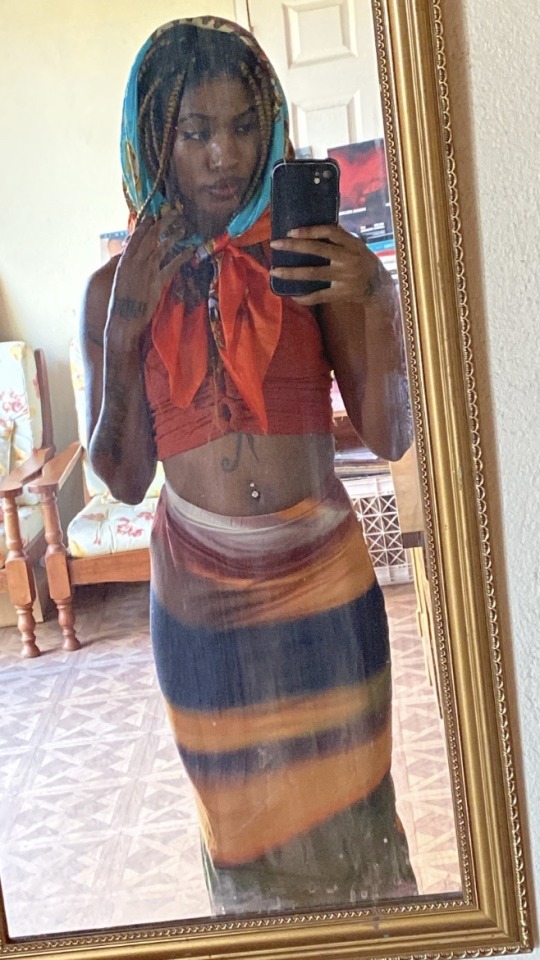
#me#selfie#ali farka touré#Spotify#toumani diabaté#doudou#blacktumblr#blackgirlmagic#melanin#beauty#tumblrgirl#black tumblr#saint lucia#saint lucian#caribbean women#french#tattoos#luxury#love#African folk music#african jazz#bamako
77 notes
·
View notes
Text
Ogou Or Ogun. Spirits Of Iron In African Diaspora.
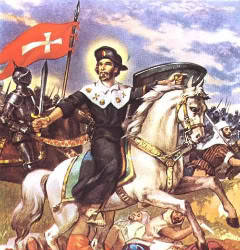
This is Papa Ogou one of many in the Ogou nation.
Ogou is a Nago spirit from the Nago Nation these spirits came to Haiti from Africa. they are strong spirits and used with the Asson or Tcha Tcha (rattle) there personality falls between Rada and Petro.
Now some might think, " Isn’t there a spirit like this in Lukumi ? ” Yes. There is, He is Ogun an Orisha. One of few Orishas who made it outside of Africa and who has some similarities with Ogou: In Haitian Vodou and Santeria and so on. They both are associated with iron and metal. Ogun is more of a blacksmith, whereas Ogou is more of a soldier.
When you hold a knife, railroad spike, sword or horseshoe in your hand and you're holding Ogun or Ogou. Ogun is also the patron of anyone who works with metal.
This spirit is great even if your practicing hoodoo because he can protect you help you even help increase your energy in your workings.
There are also many Ogous in Haiti, like Ogou Kriminel, Ogou La Flambeau, Ogou Feray, Ogou Badagris, Ogou Shango, to name a few. He is also associated with a particular region of Nigeria, and is often depicted as an older soldier there names in Cuban Santeria (La Regla Lucumi) he is known as Ogun, or Oggun; In Brazilian Candomble.
The name Ogou is not a name like in Africa but is actually a title used to describe warriors and they also carry a machete, but some favor a sword. There colors are red and blue, but some Ogous take additional colors like green or khaki. Remember: if you can’t afford anything other color to wear, you can always use a (white scarf to salute any spirit.)
Ogoun Ferraille, aka Papa Ogou Feray in New Orleans, this warrior lwa is the primary figure of Saint James the Greater—the saint himself riding into battle on a white horse. He is also represented by the Archangel St. Michael, and Saints Andrew, Martin Caballero, some use Saint Peter and John the Baptist any many others depending on which African diasporic religion you want to practice.
He is the chief of all the warrior paths of Ogun durning the Haitian revolution which gave the colors to the Haitian flag.

Orisha Ogun
INVOKED:
Ogun or Ogou is invoked to heal diseases affecting blood, including AIDS, leukemia, and sickle-cell anemia. He is invoked for safety and success before surgery. He also heals infertility and erectile dysfunction. Request his protection from crime and criminals. He also help finds employment for devotees.
Ogou is usually syncretized to Saint James the Greater but may also be associated with Michael Archangel and Saints Andrew, any many others depending on which African diasporic religion you want to practice.
He is a works tirelessly at the forge, in the bedroom, and on behalf of his devotees. He never rests.
He will use his machete to cut away all evil and sweep your enemies away. But he is also a tender and loving Papa. I’ve will cry when his children are in pain. Ogou also loves the ladies and he is one of the most commonly married lwa.
ATTRIBUTES: A machete, a three-legged iron cauldron, traditionally wrapped in chains and filled with iron implements, including tools, spikes, nails, and knives👇
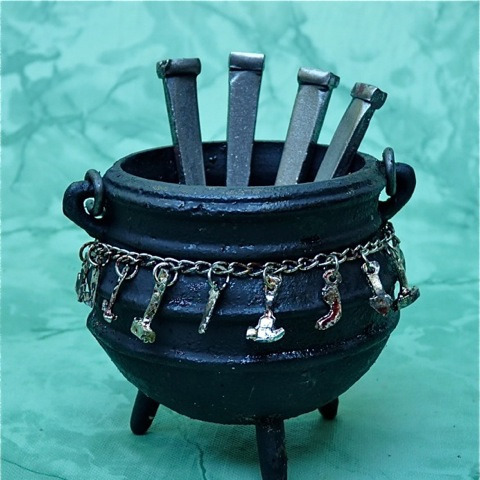
SPIRIT COLOURS: Red, black, sometimes green, sometimes red and white (the colors of heated iron), or blue and red (the colors of the Haitian flag) or Green and black for Ogun. But can always wear white if you don't have the other colors.
OFFERINGS: Red candles, cigars, rum, whisky, aguardiente, or other alcoholic beverage— incense, metal, chains, metal tools, railroad spikes. He likes red beans and rice, and typically likes Florida water as a cologne.
Fill a cauldron with found pieces of metal, like rails or railroad spike (not plastic).
He will often blow cigar smoke on people to give them blessings.
So whichever one you're drawn to like Haitian or African spirits, there's no spirit better to have for protecting than Ogun. Except, St. Michael or God of course 😃
Everyone needs a warrior. Ogun is his name among the Yoruba people. Among the Fon he is called Gu. In Cuban Santeria (La Regla Lucumi) he is known as Ogun, or Oggun; In Brazilian Candomble , Ogum; in Haiti’s Vodou and New Orleans Voodoo Papa Ogou, or simply Ogou.
Feast Day: He is syncretized with St. Peter whose feast day is June 29, St. James whose feast is July 25th, and St. Michael whose feast is Sept. 29th.
#Haitian Vodou Lwa#African spirit Ogun#Law Ogou#Spirits#Haitian Vodou#New Orleans Voodoo#Lwa & Saint connection#spiritual#google search#rootwork#Southern voodoo#like and/or reblog!#follow my blog#Google search
13 notes
·
View notes
Text
It's #WorldGorillaDay! 🦍

Houston Chandler (American, 1914–2015)
Gorilla, c.1946
Wood, 8 5/8 x 7 3/4 x 5 1/8 in. (21.9 x 19.7 x 13 cm)
Saint Louis Art Museum 1124:2010
"'Gorilla' features smooth surfaces, abstracted forms, and a masklike face. These elements are evidence of Houston Chandler’s search for 'the simplicity that brings out the greatest line of expression.' Though the gorilla rests in a hunched pose, its muscular limbs, arranged in diagonals across its body, allude to its physical power."
#animals in art#animal holiday#20th century art#1970s#World Gorilla Day#Saint Louis Art Museum#sculpture#woodwork#gorilla#ape#primate#Houston Chandler#American art#modern art#African American art
13 notes
·
View notes
Text
❄️🌛~{ Comission: Dance at the Moonlight }~🌜❄️
─┉┈◈◉◈┈┉┉┈◈◉◈┈┉.·:*¨༺ ༻¨*:·.─┉┈◈◉◈┈┉─
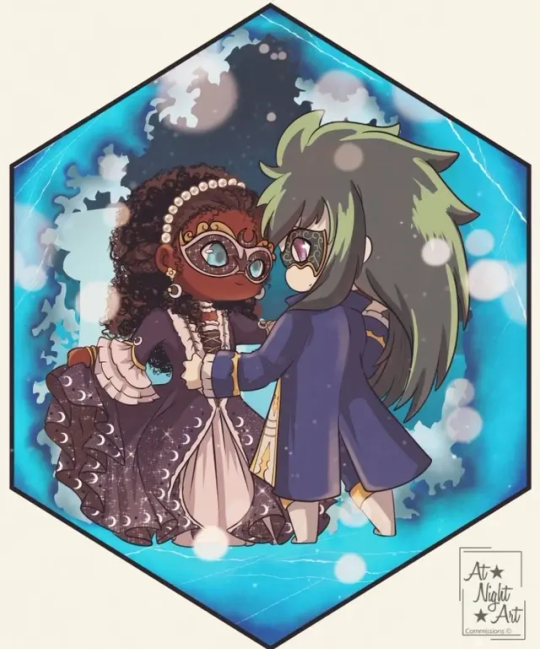
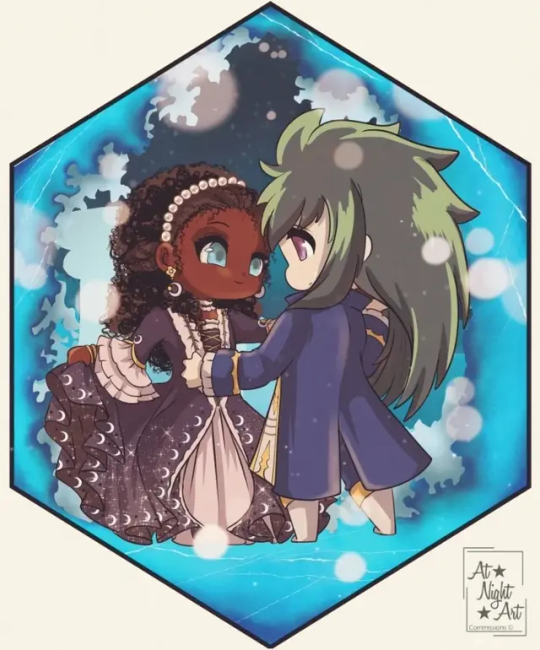
─┉┈◈◉◈┈┉┉┈◈◉◈┈┉.·:*¨༺ ༻¨*:·.─┉┈◈◉◈┈┉─
╭── ⋅ ⋅ ── ✩ ── ⋅ ⋅ ──╮
♒: 𝑨𝒍𝒐𝒓𝒔 𝒏𝒆 𝒎𝒆 𝒍𝒂𝒊𝒔𝒔𝒆 𝒑𝒂𝒔 𝒂𝒕𝒕𝒆𝒏𝒅𝒓𝒆
𝑽𝒊𝒆𝒏𝒔 𝒂 𝒎𝒐𝒊 𝒕𝒆𝒏𝒅𝒓𝒆𝒎𝒆𝒏𝒕, 𝒆𝒏 𝒖𝒏𝒆 𝒏𝒖𝒊𝒕 𝒅𝒆 𝑱𝒖𝒊𝒏
𝑱𝒆 𝒎𝒆 𝒕𝒊𝒆𝒏𝒔 𝒂 𝒕𝒐𝒏 𝒑𝒐𝒓𝒕𝒂𝒊𝒍
𝑬𝒕 𝒕𝒆 𝒄𝒉𝒂𝒏𝒕𝒆 𝒖𝒏𝒆 𝒄𝒉𝒂𝒏𝒔𝒐𝒏 𝒂𝒖 𝒄𝒍𝒂𝒊𝒓 𝒅𝒆 𝑳𝒖𝒏𝒆
𝑼𝒏𝒆 𝒄𝒉𝒂𝒏𝒔𝒐𝒏 𝒅'𝒂𝒎𝒐𝒖𝒓, 𝒎𝒂 𝒄𝒉𝒆𝒓𝒆, 𝒖𝒏𝒆 𝒔𝒆𝒓𝒆𝒏𝒂𝒅𝒆 𝒅𝒆 𝒄𝒍𝒂𝒊𝒓 𝒅𝒆 𝑳𝒖𝒏𝒆
.
🌙: 𝑲𝒘𝒂 𝒉𝒊𝒗𝒚𝒐 𝒏𝒊𝒔𝒊𝒔𝒖𝒃𝒊𝒓𝒊
𝑵𝒋𝒐𝒐 𝒌𝒘𝒂𝒏𝒈𝒖, 𝒌𝒘𝒂 𝒖𝒑𝒐𝒍𝒆, 𝒌𝒂𝒕𝒊𝒌𝒂 𝒖𝒔𝒊𝒌𝒖 𝒘𝒂 𝑱𝒖𝒏𝒊
𝑵𝒂𝒔𝒊𝒎𝒂𝒎𝒂 𝒌𝒘𝒆𝒏𝒚𝒆 𝒍𝒂𝒏𝒈𝒐 𝒍𝒂𝒌𝒐
𝑵𝒂 𝒏𝒊𝒏𝒂𝒌𝒖𝒊𝒎𝒃𝒊𝒂 𝒘𝒊𝒎𝒃𝒐 𝒌𝒘𝒆𝒏𝒚𝒆 𝒎𝒘𝒂𝒏𝒈𝒂𝒛𝒂 𝒘𝒂 𝒎𝒘𝒆𝒛𝒊
𝑾𝒊𝒎𝒃𝒐 𝒘𝒂 𝒎𝒂𝒑𝒆𝒏𝒛𝒊, 𝒎𝒑𝒆𝒏𝒛𝒊 𝒘𝒂𝒏𝒈𝒖, 𝒔𝒆𝒓𝒆𝒏𝒂𝒅𝒆 𝒚𝒂 𝒎𝒘𝒂𝒏𝒈𝒂 𝒘𝒂 𝒎𝒘𝒆𝒛𝒊
╰── ⋅ ⋅ ── ✩ ── ⋅ ⋅ ──╯
- 𝓓𝓮́𝓰𝓮𝓵 𝓪𝓷𝓭 𝓚𝓪𝓶𝓪𝓻𝓲𝓪: 𝓜𝓸𝓸𝓷𝓵𝓲𝓰𝓱𝓽 𝓢𝓮𝓻𝓮𝓷𝓪𝓭𝓮'𝓼 𝓛𝓪𝓼𝓽 𝓥𝓮𝓻𝓼𝓮 -
─┉┈◈◉◈┈┉┉┈◈◉◈┈┉.·:*¨༺ ༻¨*:·.─┉┈◈◉◈┈┉─
Ok, I'm gonna post this here because I just made the best purchise of my life, that is: MY SHIPP AS CHIBIS!! LOOK AT THEM!! 🥹🥹🩵🩵
❄️
Made by my friend "Atonight_art" on Twitter and Instagram! LOOK HOW PERFECTLY SHE DREW MY BABIES!! 🥹🥹🤲🏽🤲🏽🩵🩵
For those that aren't familiar, a brief introduction: This is my OC x Canon ship: Dégaria! Composed by my OC Kamaria, (ex) queen of the Ushujaa Kingdom in Kenya, and Aquarius Dégel, french Gold Saint of Athena! 🩷💚
They belong to a franchise called "Saint Seiya", more specifically to the "Lost Canvas" spin-off! Their story happens in the early-mid 18th century, that's why they're both garments of that era! 🥹
❄️
Their love story is bittersweet, and is being written on a fanfiction currently produces by yours truly. 🥰
(Translated to english soon)
I'm at the verge of tears at how lovingly, soft and delicate Laura portrayed them! You can feel the love on your eyes... 🥹
Please everyone, if you guys have Instagram or Twitter, I highly recommend check her work out! Is suberb! 🙏🏽🩵
❄️
Thank you all for coming to my emotional momma ramble, you guys can go now :'D
#saint seiya#the lost canvas#the lost canvas oc#saint seiya oc#os cavaleiros do zodiaco#Degel de Aquário#aquarius dégel#Gold Saint#Black oc#African OC#Kenyan OC#Kenyan Queen#Saint Seiya Kamaria#Kamaria Saint Seiya#Kamaria Selene#Kamaria Olapa#OC x Canon#My OC#Not my art#Comission#chibi comission#My beloved babies#they're so soft#I love them 🥹#Despite their love being tragic af#She loves him so much#And he loves her too and just wanna make her happy and safe#Their gaze 🥹😭#* Crying momma noises *
4 notes
·
View notes
Text

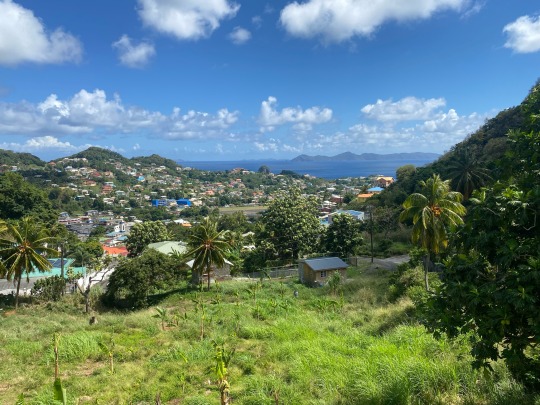

#me#black art#african#saint vincent and the grenadines#black man#African man#life#black tumblr#nigerian#long locs#men with locs#nature
2 notes
·
View notes
Text
Let's talk about San Baltasar, the Wise King, Saint of Afroargentines.
I think it's extremely interesting how one of the biggest afrodiasporic cults native to Argentina is that of El Santo Negro (the Black Saint) St. Balthazar, the Wise King. Other syncretic saint cults make mention to african deities or saints with titles such as "The Queen of Rivers" or "The Queen of the Sea", making the deities involved easily identifiable, but this cult in particular is one of the most widespread across the black population of Argentina and yet the most elusive in regards to who may be behind the mask. At least, until you pay attention to the details.
The Church first introduced the cult of Catholic Figures and Saints such as San Baltasar (King Balthazar) or San Benito de Palermo (St. Benedict of Palermo, the Moor) as a way to control the enslaved population politically and culturally. Although their goal was to dissipate african religions and install catholicism among them instead, they underestimated black argentines: after much effort, the church allowed the enslaved faithful to organize socially and politically and perform dances, drumming and singing for the saints of their formed Cofradía (similar to a congregation, but including social and political structures within it, naming a king and queen or a president and other culturally and politically significant roles). Thanks to the passing down of african culture and customs through these organized societies and the syncretism within them, we can proudly say the church failed in their attempts. The african spirits are very much still an integral part of afroargentines' lives. Today, although it has spread across the country and beyond, the center of this cult is in it's origin, the capital city of Corrientes, Argentina, in a neighborhood called Cambá Cuá.
The cult to San Baltasar is clearly african in origin, although with indigenous (guaraní) influences, such as calling the saint Santo Cambá/Kambá (Black in guaraní language), calling his statues Cambára'angá (guaraní for Black Figure), and some dancers dressing up as indigenous figures like el pombero, among other things. Thus, it is an afroindigenous cult, developing amongst mixed descendants of african enslaved peoples and guaraní natives. The cult is also a local expression of the most african of customs: ancestral veneration. The festivities honor not only the Saint himself, but all the black ancestors before us who are present in pictures at the altar, and answer to the call of the drums. The color red, that covers the saint and adorns his followers, is the color of warriors and protection in African Traditional Religions. He's offered food and drink (such as wine and traditionally made sangría), and most importantly dance and drums. He is invoked and honored, along with the ancestors, through drumming and dancing, through La llamada a San Baltasar and Saludos de Tambores a los Santos Cambá (Calling Saint Balthazar and Drum Salutations to the Black Saints).
His festivities, held in Corrientes around Epiphany, from January 1st to the 6th, include dancing afroargentinean rhythms such as diverse forms of candombe and samba. Particularly, he was traditionally honored with a dance called bambula, a form of ring dance where women move in short and slow steps, barely lifting their feet, while men jump in the air, and where one singer sings a phrase that is then repeated or answered by the others present. This kind of dance is native to Congo and Angola, and widely practiced by enslaved people and their descendants in the Southern United States, the Caribbean, Brazil, Argentina and Uruguay. The music used to this day to petition favors, to invoke his spirit into his image and even dispel or call thunderstorms or other natural phenomena, is called charanda and includes drums, guitars and triangles. Just like in other afrodiasporic devotional and resistance dances, these dances involve Kings and Queens of the dance, a hierarchy of drummers including those called Master drummers, and a hierarchy of the drums themselves as Chico, Repique and Piano.
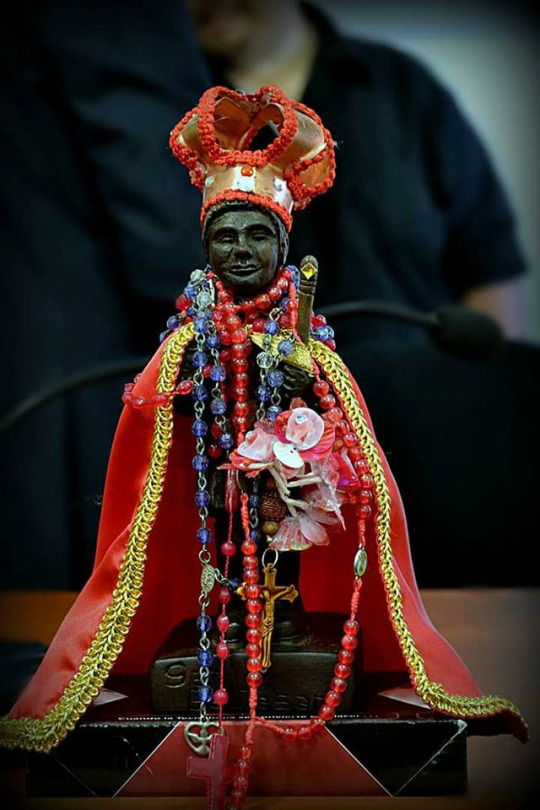
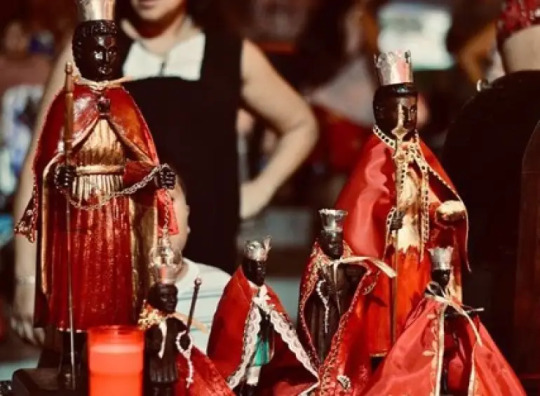
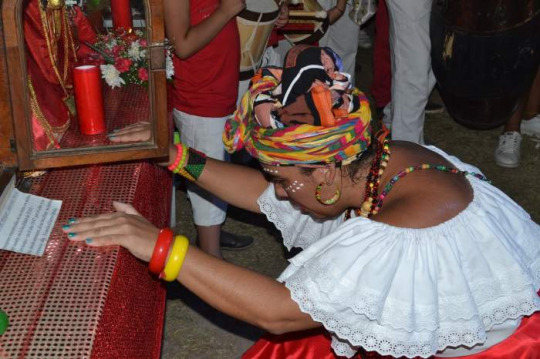


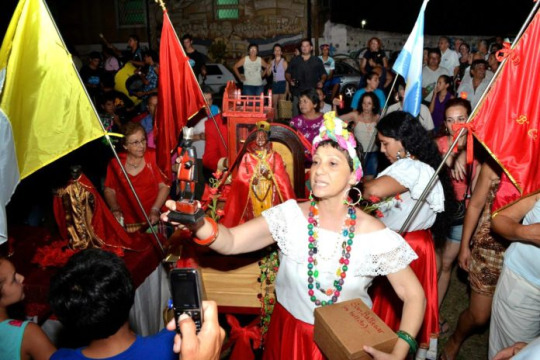
If you compare him to Xangó...
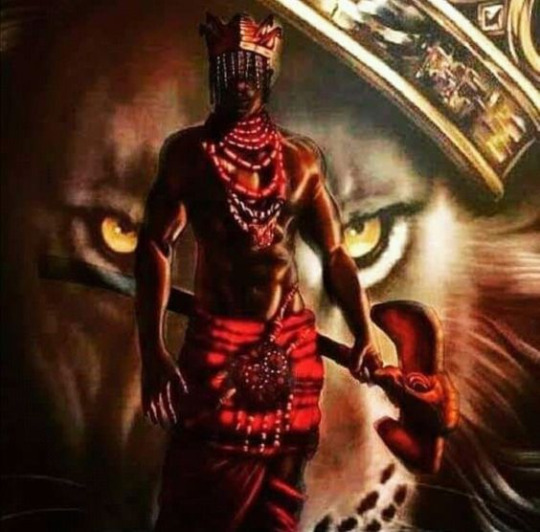
He carries a double-headed axe. He's often depicted wearing a crown. His colors are, surprisingly, also white and red, with gold accents. Also a King and a warrior, also associated with thunderstorms and fire, drums and dance. His followers also wear white and red beaded collares. Ringing any bells...?
Now, I am not saying they are the same Spirit, but there is an undeniable resemblance. You come to your own conclusions. It's kind of obvious that this afrodiasporic cult stems from either (a) a hidden, veiled cult to the orisha(s) or (b) a syncretic cult to african deities (not only orishas but maybe other african spirits too). There is, after all, strong ties not only to Yorubaland but also to Dahomey, Kongo, etc. Just in this instance, the spirit may resemble an orisha but the rhythms and dance are from kongo, so there is much more to it than just one or the other. There is a culture of resistance born from the union of Nations through music, faith and tradition.
Sources:
None of the images here belong to me: San Baltazar and festivities [1,2,3,4-6] and Xangó [1]
Festividad de San Baltasar : performances artístico-religiosas de la cofradía de la ciudad de Corrientes, by Cavalieri, Ana Belén, Universidad Nacional del Nordeste. Facultad de Artes, Diseño y Ciencias de la Cultura, 2018. Available for download at [Link]
San Baltazar, Historias de Corrientes at [Link]
The bamboula Lineage at [Link]
The Orishas, Indiana University at [Link]
#ATRs#afroargentina#afroargentines#afrolatine#afrolatinx#afrolatino#black saint#black saints#st balthazar#st. Balthazar#San Baltazar#Santería#shangó#xangó#santeria#african diaspora#african traditional religions#african diasporic religions#african diaspora religions#ADRs#san baltasar
20 notes
·
View notes
Text
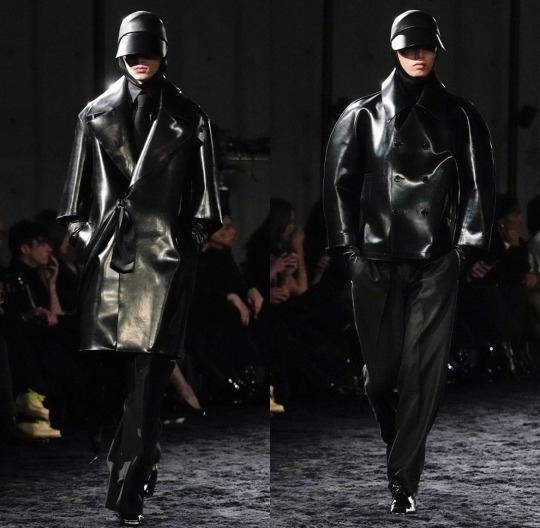



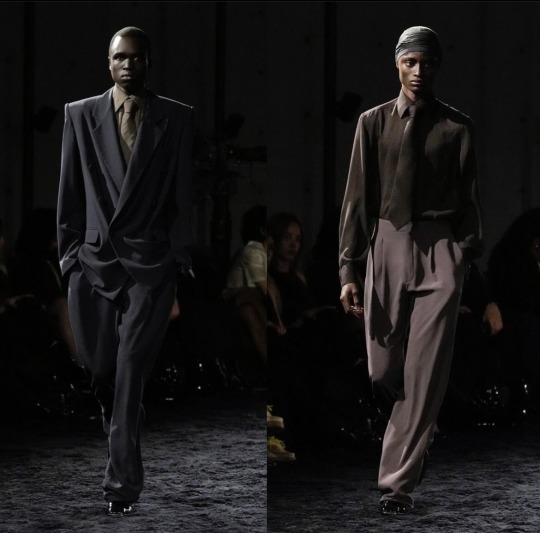
SAINT LAURENT FALL 24
www.beau-gar.tumblr.com
#saint laurent#anthony vaccarello#paris fashion week#fall 2024#black man#black model#handsome#menswear#fashion#blackmalemodel#la sape#sapeurs#menswearfashion#male model#african models#fashion model#model#dandy#sprezzatura#mensfashion#black models#men's fashion#parisian style#gq style#style inspiration#street style#fashion style#mens style#style
25 notes
·
View notes
Text

Saint Maurice (also Moritz, Morris, or Mauritius; Coptic: Ⲁⲃⲃⲁ Ⲙⲱⲣⲓⲥ) was an Egyptian military leader who headed the legendary Theban Legion of Rome in the 3rd century, and is one of the favorite and most widely venerated saints of that martyred group. He is the patron saint of several professions, locales, and kingdoms.
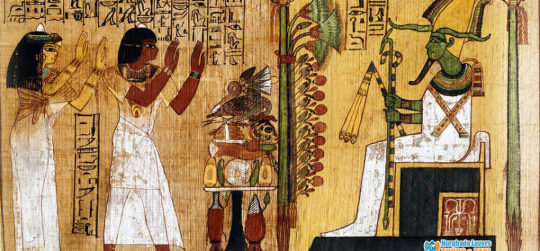
According to the hagiographical material, Maurice was an Egyptian, born in AD 250 in Thebes, an ancient city in Upper Egypt that was the capital of the New Kingdom of Egypt (1575-1069 BC). He was brought up in the region of Thebes (Luxor).
Maurice became a soldier in the Roman army. He rose through the ranks until he became the commander of the Theban legion, thus leading approximately a thousand men. He was an acknowledged Christian at a time when early Christianity was considered to be a threat to the Roman Empire. Yet, he moved easily within the pagan society of his day.
The legion, entirely composed of Christians, had been called from Thebes in Egypt to Gaul to assist Emperor Maximian in defeating a revolt by the bagaudae. The Theban Legion was dispatched with orders to clear the Great St Bernard Pass across the Alps. Before going into battle, they were instructed to offer sacrifices to the pagan gods and pay homage to the emperor. Maurice pledged his men's military allegiance to Rome. He stated that service to God superseded all else. He said that to engage in wanton slaughter was inconceivable to Christian soldiers. He and his men refused to worship Roman deities

Martyrdom
However, when Maximian ordered them to harass some local Christians, they refused. Ordering the unit to be punished, Maximian had every tenth soldier killed, a military punishment known as decimation. More orders followed, the men refused compliance as encouraged by Maurice, and a second decimation was ordered. In response to the Theban Christians' refusal to attack fellow Christians, Maximian ordered all the remaining members of his legion to be executed. The place in Switzerland where this occurred, known as Agaunum, is now Saint-Maurice, Switzerland, site of the Abbey of St. Maurice.
So reads the earliest account of their martyrdom, contained in the public letter which Bishop Eucherius of Lyon (c. 434–450), addressed to his fellow bishop, Salvius. Alternative versions have the legion refusing Maximian's orders only after discovering innocent Christians had inhabited a town they had just destroyed, or that the emperor had them executed when they refused to sacrifice to the Roman gods.
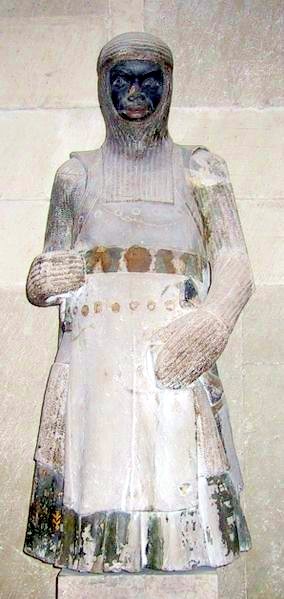
Veneration
Saint Maurice became a patron saint of the German Holy Roman Emperors. In 926, Henry the Fowler (919–936), even ceded the present Swiss canton of Aargau to the abbey, in return for Maurice's lance, sword and spurs. The sword and spurs of Saint Maurice were part of the regalia used at coronations of the Austro-Hungarian emperors until 1916, and among the most important insignia of the imperial throne (although the actual sword dates from the 12th Century). In addition, some of the emperors were anointed before the Altar of Saint Maurice at St. Peter's Basilica. In 929, Henry the Fowler held a royal court gathering (Reichsversammlung) at Magdeburg. At the same time the Mauritius Kloster in honor of Maurice was founded. In 961, Otto I, Holy Roman Emperor, was building and enriching Magdeburg Cathedral, which he intended for his own tomb. To that end,
in the year 961 of the Incarnation and in the 25th year of his reign, in the presence of all of the nobility, on the vigil of Christmas, the body of St. Maurice was conveyed to him at Regensburg along with the bodies of some of the saint's companions and portions of other saints. Having been sent to Magdeburg, these relics were received with great honour by a gathering of the entire populace of the city and of their fellow countrymen. They are still venerated there, to the salvation of the homeland.
Maurice is traditionally depicted in full armor, in Italy emblazoned with a red cross. In folk culture he has become connected with the legend of the Holy Lance, which he is supposed to have carried into battle; his name is engraved on the Holy Lance of Vienna, one of several relics claimed as the spear that pierced Jesus' side on the cross. Saint Maurice gives his name to the town St. Moritz as well as to numerous places called Saint-Maurice in French speaking countries. The Indian Ocean island state of Mauritius was named after Maurice, Prince of Orange, and not directly after Maurice himself.
Over 650 religious foundations dedicated to Saint Maurice can be found in France and other European countries. In Switzerland alone, seven churches or altars in Aargau, six in the Canton of Lucerne, four in the Canton of Solothurn, and one in Appenzell Innerrhoden can be found (in fact, his feast day is a cantonal holiday in Appenzell Innerrhoden).Particularly notable among these are the Church and Abbey of Saint-Maurice-en-Valais, the Church of Saint Moritz in the Engadin, and the Monastery Chapel of Einsiedeln Abbey, where his name continues to be greatly revered. Several orders of chivalry were established in his honor as well, including the Order of the Golden Fleece, Order of Saints Maurice and Lazarus, and the Order of Saint Maurice. Additionally, fifty-two towns and villages in France have been named in his honor.
Maurice was also the patron saint of a Catholic parish and church in the 9th Ward of New Orleans and including part of the town of Arabi in St. Bernard Parish. The church was constructed in 1856, but was devastated by the winds and flood waters of Hurricane Katrina on 29 August 2005; the copper-plated steeple was blown off the building. The church was subsequently deconsecrated in 2008, and the local diocese put it up for sale in 2011. By 2014, a local attorney had purchased the property for a local arts organization, after which the building served as both an arts venue and the worship space for a Baptist church that had been displaced following the hurricane.
On 19 July 1941, Pope Pius XII declared Saint Maurice to be patron Saint of the Italian Army's Alpini (mountain infantry corps). The Alpini have celebrated Maurice's feast every year since then.
The Synaxarium of the Coptic Orthodox Church of Alexandria does not mention Saint Maurice, although there are several Coptic churches named for him.
#african#deep reddish brown skin#north african#coptic#coptic orthodox#alexandria#catholic#roma#roman#gaul#saint maurice#moors#morr#moor#pope#pope pius xii#new orleans#south#south side#baptist#churc#church#egyptian#egypt#kemet#ta meri
207 notes
·
View notes
Text
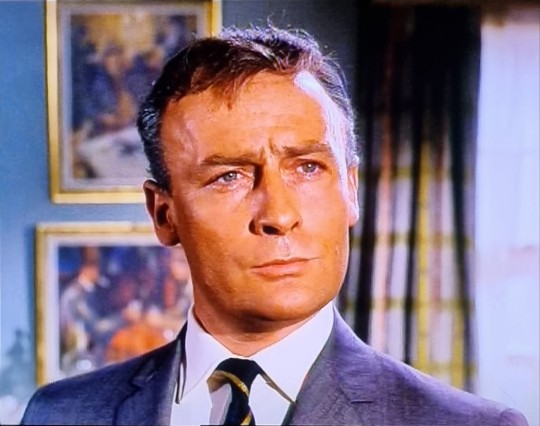



Edward Woodward guest stars as Jack Liskard, Prime Minister of an unspecified African country and the target of multiple assassination attempts, in The Saint: The Persistent Patriots (5.15, ITC, 1967)
#fave spotting#edward woodward#callan#the saint#the persistent patriots#1967#david callan#classic tv#eddy is the named guest star for this episode but actually he wasn't really the household name he would become at this point#in fact this ep was the first Saint episode to air in the uk in 1967 on January 6th‚ setting off a banner year for Woodward that would#be the making of his career. he'd done a few guest spots (Sergeant Cork and Mogul among them) and yes he'd had some stage success#but 67 was his year; around the same time as this Saint appearance he could be seen on the BBC's celebrated drama strand Theatre 625 as the#lead in a multi episode adaptation of Evelyn Waugh's Sword of Honour‚ and almost exactly a month later he'd be making his first screen#appearance as Callan in the Armchair Theatre pilot A Magnum for Schneider‚ the beginning of tv immortality and bigger and better things for#the actor. here he's... well he's serious and he's sullen (two of Ed's strengths as an actor) in a role which.. is FINE on the surface but#absolutely begs some deeper questions. he's the prime minister of an unnamed African country‚ in London to negotiate the independence of#said country from the UK. it's.. a complicated issue (which this single Saint episode absolutely fails to address but I'd have been truly#astonished if it had). i mean yes we're all anti colonialism here of course (even if Simon does seem suspiciously morose about the prospect#of losing another colony in his opening voice over‚ he at least appears to be on Eddy's side through the episode) but there's a kind of#deafening silence throughout this ep: Ed is of course white. his various ministers and other government officials who oppose him are all#also white. the titular 'patriots' who oppose him and make attempts on his life and to prevent the process of independence are all white#the most obvious comparison to be drawn (and presumably the main inspiration for the character) is Rhodesian prime minister Ian Smith#who had led the white minority government of what is now Zimbabwe from 1964 and had been involved in similar negotiations with the british#government (that fell apart in late 65 as Smith's government announced Rhodesia's unilateral independence; the country then became an#unrecognised state subject to economic sanctions that lasted more than a decade). the thing is‚ Smith was a racist piece of shit; the whole#reason those negotiations broke down was because of his refusal to secure black representation in Rhodesia's governance#which makes the complete absence of any black characters in this episode a major red flag. but Ed's character isn't presented as the#villain of the piece; the episode is adamant that the work he's doing is selfless and for the betterment of his country‚ and it isn't as if#Smith was a particularly popular figure in the uk at this point for the ep makers to be painting a positive portrait of him. idk#it's messy. at best tone deaf and at worst.. well. i wish Ed had had a better ep to guest star in that's all im saying
8 notes
·
View notes
Text
watching the Rugby World Cup and i’m so nervous y’all 😭 if you’re South African, what’s good baby? 🤭🇿🇦
5 notes
·
View notes
Text

IG: candicecynthia.t
#black girls winning#black girls icons#black girl beauty#black girl magic#black girls are beautiful#black girl fashion#black woman shit#black woman femininity#black woman in luxury#black woman appreciation#all black outfit#yves saint laurent#ysl girl#dark skin women#african american#african women#black beauty#long hair#fashion#summer#photography#curly hair#black hypergamy
41 notes
·
View notes